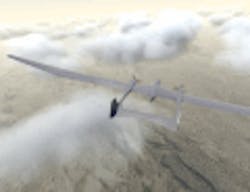Sikorsky unveils virtual reality center for CH-53K Heavy Lift Helicopter
STRATFORD, Conn., 22 Jan. 2011. Sikorsky Aircraft Corp. unveiled a virtual reality center for the CH-53K heavy lift helicopter program, a tool to help identify gaps in a three-dimensional digital environment prior to experimental assembly. Through this design tool, the program expects to realize cost savings and greater efficiency that can minimize delays in final assembly of the aircraft, Sikorsky officials say."The virtual reality tool allows the team to find production and maintenance issues that typically only could be found during the initial build of the aircraft," says Dr. Michael Torok, Sikorsky vice president and chief engineer for Marine Corps programs. "With this tool, we can identify these potential problems in time to avoid them. Ultimately, this will save time and money."Located within the engineering labs at Sikorsky's main manufacturing facility, the virtual reality center uses sophisticated software, along with 12 cameras, a head-mounted display headset, gloves, and a gripping tool. All devices are linked to three computers, which comprise the command center for operating the system."This tool will enhance the designer's ability to design an aircraft that is easier to maintain. Designers will no longer have to rely on their imaginations to understand assembly and maintenance issues. They will be able to experience them long before parts are fabricated," says Mark Miller, Sikorsky vice president, research and engineering. "The virtual reality center is the final tool in the CH-53K digital design suite, as the team collaborates to use proven and mature technologies that will significantly expand the fleet's abilities," says Dennis Jarvi, Sikorsky vice president, Navy/Marine Corps programs.The U.S. Marine Corps CH-53E heavy lift helicopter program is planned to include production of more than 200 aircraft. Currently, the CH-53K helicopter is in the SDD phase with all of the major subcontracts awarded and valued at over $1.1 billion.The CH-53K helicopter will maintain virtually the same footprint as its predecessor, the three-engine CH-53E SUPER STALLION helicopter but will nearly triple the payload to 27,000 pounds over 110 nautical miles under hot high ambient conditions. The CH-53E helicopter is currently the largest, most powerful marinized helicopter in the world. It is deployed from Marine Corps amphibious assault ships to transport personnel and equipment and to carry external (sling) cargo loads.The CH-53K helicopter's maximum gross weight (MGW) with internal loads is 74,000 pounds, a 6 percent improvement over the CH-53E aircraft. The CH-53K's MGW with external loads is 88,000 pounds, a 20 percent improvement over the CH-53E helicopter.ZThe program is expected to achieve the Initial Operational Capability milestone by 2018.
